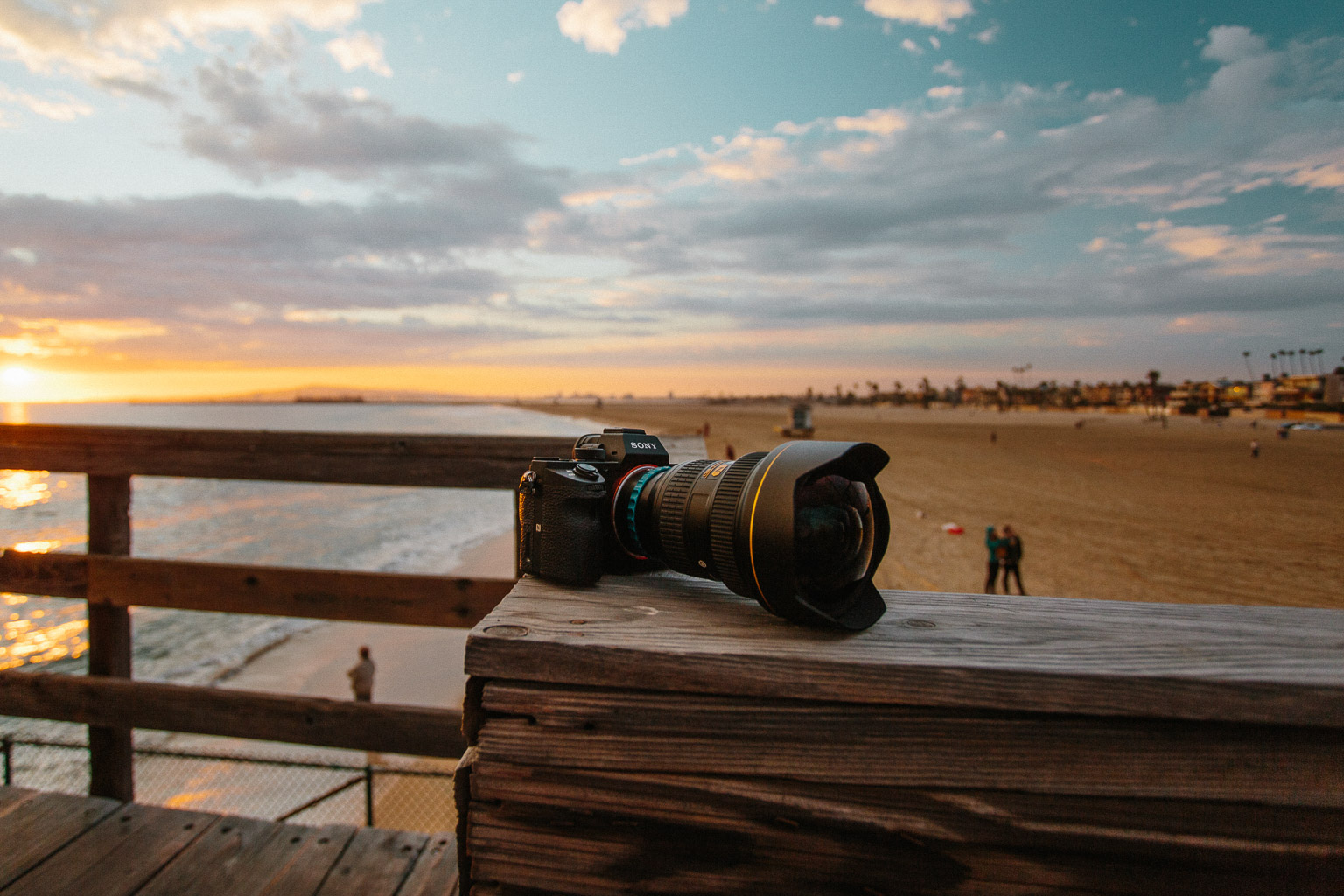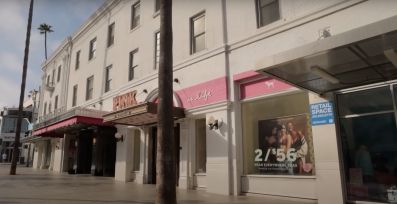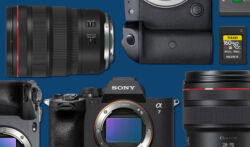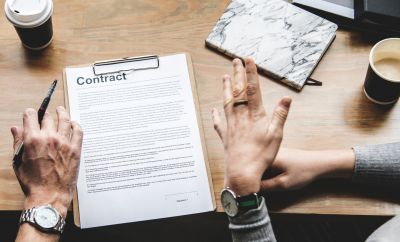There’s a technique for cleaning a room that is fantastic. Stand there, in the mess of clothes, old Cheetos and Cheerios, unopened mail and books, and imagine it clean. Imagine it at it’s cleanest, exactly how you would want it. Sit with that feeling for 2 minutes until you start to feel that good feeling of being in that room at it’s most pristine. Now open your eyes and start working.
This technique uses a positive emotional draw to have us press toward something good, rather than reacting to the frustration at how dirty it is. Rather than focusing on what is wrong, we are being drawn forward by some future pleasure. And that, right there, is where I’d tell someone new to start in photography.
It sounds dismissive, but it isn’t. This is, and will always be, the first thing I encourage people to do.
If the future for you is to be in a museum or gallery, or to be a famous social personality, educator, environmentalist, humanitarian, or whatever else… those end goals are going to very much determine how and where you spend your energy, time, money, and who you invest hours in. This will be a constant ingredient in your work, and if it’s not by choice it will be by force after a crisis when you realize all of this work has had no direction and now people/companies want to use you as a gear in their machine to crank out their work, for their vision. I’ve been around the block enough to know this is, maybe the conversation especially as you get more successful.
Now with that out of the way lets talk some non-theoretical practical examples.
Exercise your creative muscles daily
If you’re fresh out of high school, or a full time mom or dad, or have a 60hr week corporate job the reason you are pursuing this is likely because it is a form of expression that either excites you or rings true to your internal feelings and experiences. Find the time. 10 minutes a day, 2 hours a day, carve out some time as a discipline to make your own or look at good creative work every day. Take a picture, doodle, write poetry, watch a good film, check sites like inspiration-now.com, paint, sculpt. Whatever it is just don’t let a day go by without moving that muscle.
Find a platform that works for you, whether that’s Instagram, 500px, Behance, your own blog, tumblr, Facebook, whatever, and post there daily. That might mean you dig through a bunch of archived photos and practice new editing styles, or find new ways to engage the audience on that platform.
In each of those your initial following will be friends and family so it’s the most supportive your audience will ever be. Try new things in that space, but make it a daily routine and be strict about it. Set an alarm, 9am, 12pm, 5pm, whenever, and post something, say something; make your name a part of the conversation.
If you have a camera, use it
This could also have a subtitle “please, please don’t get caught up thinking about gear when you start.” I loved gear so much less when I started because there weren’t so many options and I didn’t really know where to look for the swarm of opinions about gear (I wasn’t in many online photo communities at the time). If you have a phone that is newer than 2015 then it’s better than the camera I had when I started. Use that. If you only have a film camera that’s old and you don’t want to shoot film, don’t. Sell it and get a camera where you can change lenses, or vice versa. What inspires you and what goals you have will, at some point, help guide you on what gear you need to make that happen. But, seriously, use what you have if you have anything to exercise that creative muscle.
If we HAVE to talk about entry level gear though… I’d suggest searching the Facebook marketplace or Craigslist for a camera someone suggests to you. Ask around and pick one that fits your budget. I really think that any recommendation is because it suited someone’s needs at some point and could very well suit yours to get going. Sony, Canon, Nikon, Fuji, Pentax, whatever, just pick. The reality is it took me about 4 years to grow out of my first camera, as it outperformed me every time before that.
Whatever direction inspires you, go be a positive force there
I still remember a person who followed me from way early on, way before I would even consider my own work good on Instagram. Layla was always responsive, kind, encouraging, and engaging. I remember when I was invited to speak at a conference and I saw she was there I sought her out to hug her and thank her and it meant so much to me that she was always a force of positivity in my work, even when I wasn’t, and even now I hold a very special place in my heart for those people that are recklessly positive with other artists.
Don’t just follow the celebrities or personalities or eternally-crushing pros. Go be a positive force with other people at the same stage as you are, ESPECIALLY if you can do that with a local crew. I never had a real good local creative crew to grow alongside but after years I was able to find a couple of great friends who were also growing and are now names you would know for sure.
Learn to love editing
[See how I shot and edited the photo above here: How I Shot It | Laguna Beach Sunrise Drone Shot From Shoot To Post]
I wont expand too much on this one because I know there are really talented artists who have no desire to edit and they outsource that in their work, however, those are most likely people who have developed a style over years and now are able to communicate that style to outsourced editors to achieve, and save themselves time and, thus, money to hand it off. For me, playing with editing has made the creative process so enjoyable. It’s like when I learned to play the piano. It sucked at first and for a long time and was a lot of failing and stumbling, but then there was a moment where something in my head clicked and I was able to enjoy the process.
Push every button, move every slider, try different presets, make it muted, make it poppy, use crazy split toning, move the tone curve around, over sharpen, over clarify, just go nuts. You want to find your style because you see how well someone with a solid style can evoke emotion in you and you want to do the same thing. Refuse the temptation to take shortcuts, not knowing how you arrived at a style will bother you later in life.
And the ‘whatabouts’
What about education? What about networking, settings, tutorials, business strategy, and what about clients? I hear you. None of these are bad questions, but none of them are really what draw forward to that proverbial ‘clean room’ I talked about earlier.
Lastly, ask a lot of questions. And not shortcut secret-type questions. You can ask settings questions all the time, and most everyone I know will answer them because they know that’s not the trick. And if someone helps you out along the way with info or tips or advice, shout them out and give them some credit and love for that help. You can also ask about how to develop a style, or how they find that good light, or a lot of other questions that all have the same answer, time.
Some people get lucky business breaks and start off having more creative vocabulary to draw on because of their childhood or parents, or exposure to art, but we all will put in work to communicate what we have. The hurdle will be to stop worrying about gear and the how, and to get out there. Trust me, no Youtube review or tutorial or article is going to get you where you need to be in photography.

















